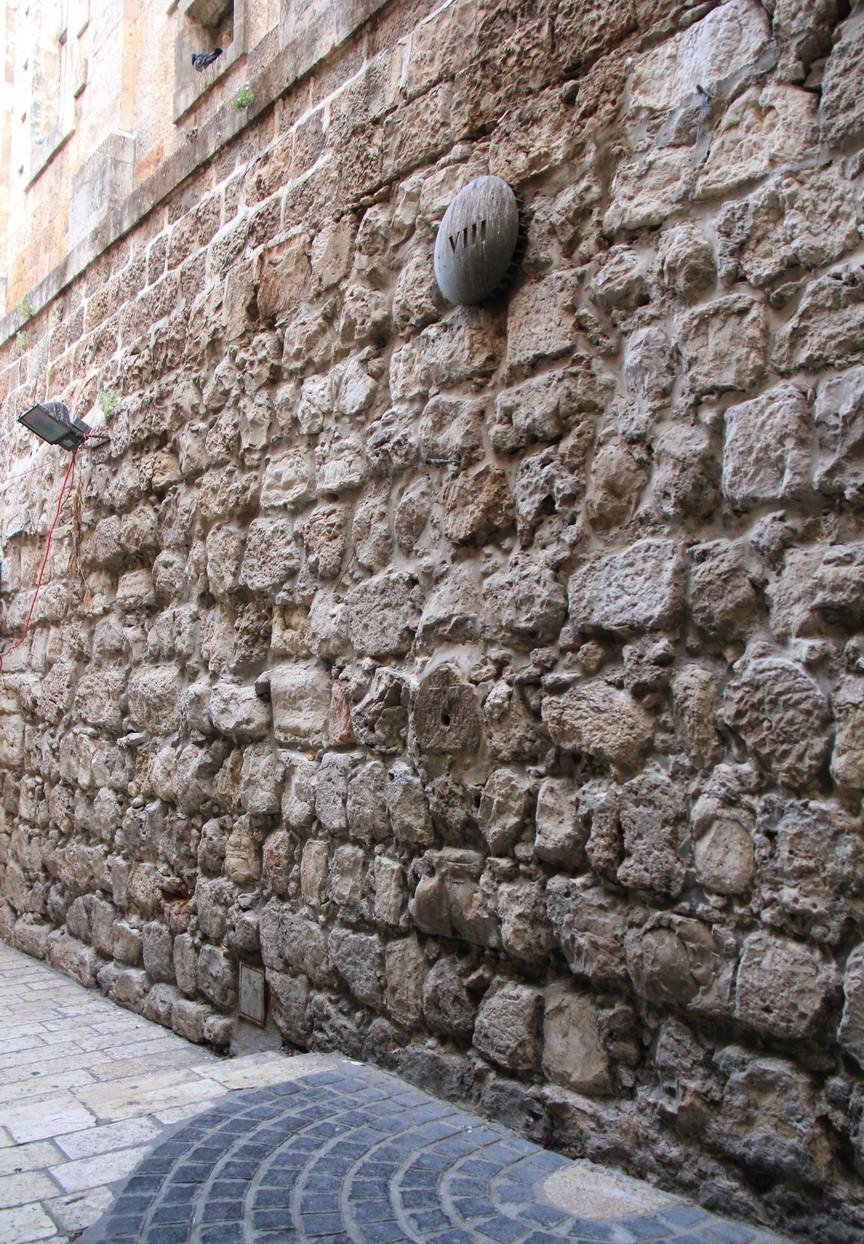The Bitter Road was the last stretch of road in Jesus' life, each station has a small legend, and now, for visitors to easily identify these stations, there are circular metal plates as signs, the first to the ninth stop of the Fourteenth Station of the Bitter Road is in the streets of the Old City, and the tenth to fourteenth stops are all in the Church of the Holy Sepulchre.
Stop 8: The Greek Orthodox Monastery of St. Hararan Paus – Jesus walked forward with the cross on his back, and the Jerusalem women who were watching wept for him. Jesus stopped and said to them, "Do not weep for me, for your children, for the future of Jerusalem..." Now it is the north wall of a Greek monastery with a Latin cross carved into the wall and flanked by the Greek letters IC XC NI KA (meaning conquest of Jesus Christ). (Luke 23:27-29)

Stop Nine: From this stop, Jesus walks to the Church of the Holy Sepulchre and falls down again here, where Jesus fell for the third time. By this point, Jesus was so exhausted that he was overwhelmed by a heavy cross for the third time. This location is actually outside the east wall of the Church of the Holy Sepulchre, near the Coptic Chapel of St. Helen.
The site of the Church of the Holy Sepulchre is also believed to be the place where Christ was crucified and ascended. Since the 4th century AD, the Church of the Holy Sepulchre has become an important pilgrimage destination for Christians.
It was originally a temple of Aphrodite built during Hadrian's time. After Constantine the Great converted to Christianity, he sent his mother, Helena, to Palestine to visit the holy relics. In addition to discovering the crucifixion of Jesus, Helena allegedly identified the site as the crucifixion of Jesus. The Church of the Holy Sepulchre was built by Constantine the Great in 335 AD. The Church of the Holy Sepulchre is made up of three interconnected churches, each located on top of three different sacred sites: a rectangular colonnade church, a colonnaded atrium that surrounds calvary grounds, and a rotunda.
The church was destroyed by fire in 614 and rebuilt by the Byzantine emperor Heraclius in 630. In the early 11th century, the cathedral was demolished, and in the 12th century the Crusaders entered the city of Jerusalem and rebuilt the church. In 1555, the Franciscan church rebuilt and expanded, in 1808 it was hit by a fire, and in 1810 the church was rebuilt. The last five stops are in the Church of the Holy Sepulchre.